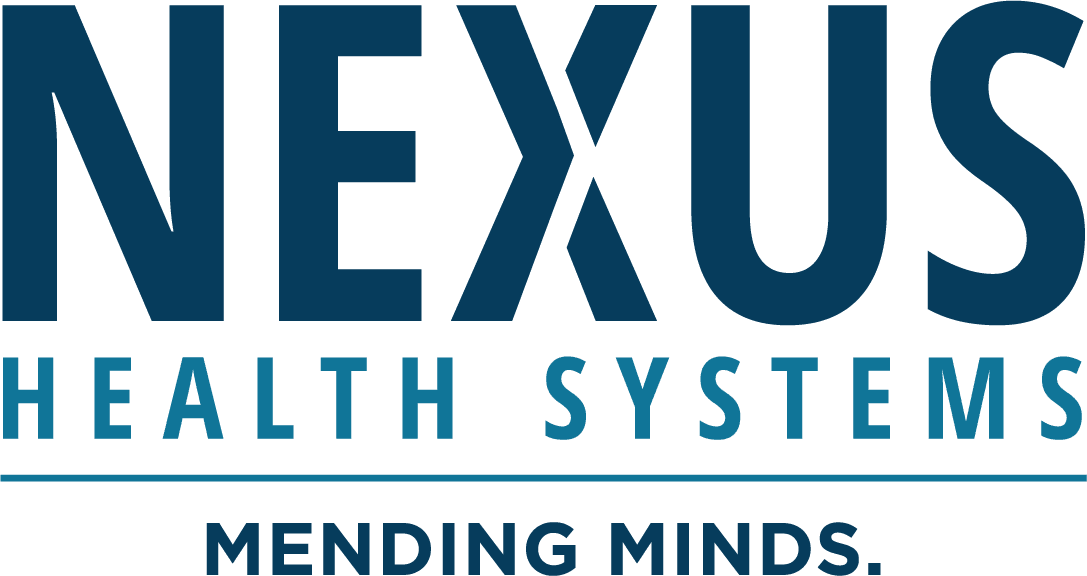

What are the stages of brain injury recovery?
From acute care to rehabilitation, this guide will walk you through the stages of brain injury recovery.
A mother of three is rushed to the hospital when part of her face begins to droop and her speech is slurred. A construction worker slips and falls from a platform, striking his head against the ground. A child rapidly develops flu-like symptoms and a purple rash. What do each of these hypothetical patients have in common? They have all experienced some form of brain injury.
While the precise stages of brain injury recovery may differ depending on the type of damage sustained, rehabilitation follows a similar sequence for each. Here, we’ll walk you through every step of brain injury recovery, explaining how the brain reacts and, more importantly, how it heals.

Stage 1: Disorders of
Consciousness.
This is the earliest stage of recovery from a brain injury. A disorder of consciousness (DOC) is a prolonged state of altered awareness and wakefulness caused by brain damage. At this point, patients may be in a coma, experiencing a condition called unresponsive wakefulness syndrome (UWS), or in a state of minimal consciousness.
Disorders of consciousness.
Coma.
- Deepest state of unconsciousness
- No eye movement
- No purposeful movement
- Lack of speech and communication
- May last for weeks or years
Unresponsive wakefulness syndrome.
- Some reflexes may be active
- Patient may appear awake
- Some eye movement and reaction to stimulation
Minimal consciousness.
- Patient may come in and out of consciousness
- Improvement in awareness of people and surroundings
- Responsiveness to instructions
- Communication abilities begins to return
What to expect in stage 1 of brain injury recovery.
Other common symptoms and behaviors during stage 1 of recovery include:
- Elevated heart rate
- High blood pressure
- Posturing or rigidity
- Tight muscles
- Sweating
- Attempting to pull out tracheostomy tubes, nasogastric tubes, or IVs
- Tracking or visually fixating on objects or people
- Turning toward or away from sound
- Restlessness in response to discomfort from diapers, nasogastric tubes, or tracheostomy tubes
Let's take a closer look at the symptoms of severe autism
Tips for caregivers during stage 1 of brain injury recovery.
Watching your loved one recover from a brain injury can be painful, confusing, and scary. Bear in mind that unusual and inconsistent responses are to be expected. Here are a few tips to help you navigate this challenging stage.
Choose your words carefully.
It’s important to remember that your loved one may only understand parts of what you say, will often forget conversations you’ve had with them, and can be easily confused. Speak slowly and clearly, allowing them extra time to respond. It’s also important to keep your comments and questions short and simple. For example, instead of saying, “Can you turn your head toward me?” say, “Look at me.” Don’t be surprised if they don’t respond, respond in ways that don’t make sense, or take up to 20 seconds to reply.
Create a calm environment.
During this stage, patients are highly sensitive to sensory stimuli. Maintain a calm physical environment by keeping the volume of televisions and electronic devices low, speaking in a calm and quiet voice, and limiting visitors to two or three at a time. Avoid surprises by explaining your intentions before making a change to your loved one’s bodily position or environment.
Emphasize the familiar.
As your loved one emerges from disorders of consciousness, they may feel confused and overwhelmed. Regularly remind them who you are, where they are, why they’re in the hospital, and what day it is. Surround them with familiar objects and pictures of family members and close friends. When possible, engage them in familiar activities.
of brain injury survivors with DOCs regained consciousness before discharge from inpatient rehab1
achieved full or partial independence before discharge from inpatient rehab1
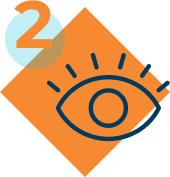
Stage 2: Post-Traumatic Amnesia and Acute Delirium.
As patients emerge from disorders of consciousness, they enter the second stage of brain injury recovery, which is marked by post-traumatic amnesia (PTA) or acute delirium, or extreme confusion, disorientation, and lack of awareness. Patients experiencing PTA may be conscious and awake, but struggle to remember past events or form new memories.
Let's take a closer look at the symptoms of severe autism

of traumatic brain injury patients experience PTA2
What to expect in stage 2 of brain injury recovery.
During stage 2 of brain injury recovery, patients often exhibit unusual or inappropriate behaviors. They may behave aggressively, experience volatile emotional swings, and lose their inhibitions. Severe disorientation associated with PTA may limit their attention span and contribute to feelings of restlessness and agitation. It is important to remain patient as you help to reorient and reassure your loved one, as they may forget conversations within minutes, especially early on in the rehabilitation process.
Other common symptoms and behaviors during stage 2 of recovery include:
- Severe confusion, or delirium
- Discomfort caused by tracheostomy or gastrostomy tubes
- Using objects in appropriately (such as attempting to brush their hair with a phone)
- Hyperactive, non-purposeful, and irrational behaviors
- Difficulty executing multi-step tasks
- Confabulation, or the invention of fictitious memories
- Inability to complete tasks without direct prompting
- Poor understanding of personal limitations
- Improving awareness of self, situation, and environment
- Improving ability to re-learn activities of daily living

What is confabulation?
Confabulation is a phenomenon whereby the brain generates fictitious memories to compensate for memory deficits. Since there is no intent to deceive, confabulation is often referred to as “honest lying.” 3
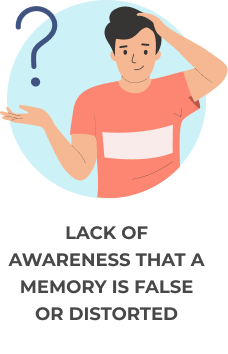

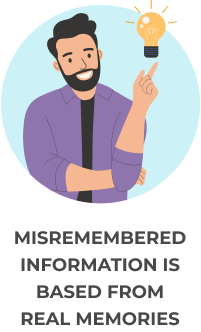

Tips for caregivers during stage 2 of brain injury recovery.
Close supervision is crucial at this stage, as patients frequently attempt unsafe behaviors and are at high risk for falls. Caregivers can play an important role in keeping patients safe and emotionally stable. Keep the following tips in mind throughout stage 2.
Act as a memory assistant.
As your loved one becomes more active and aware of their environment, they will be able to practice memory recall. You can assist by reminding them who they are and why they are in the hospital. Guide them in recounting events that occur each day, and encourage them to maintain a memory book in which they record daily occurrences and conversations.
Continue to minimize disruptions.
Maintaining a calm environment is just as important, if not more so, in stage 2. Limit the number of visitors in their room, keep the volume of electronic devices low, and surround them with familiar items and photos. A calm and familiar setting will help to soothe your loved one and promote optimum healing.
Support independent activity.
As soon as your loved one is able to move with some degree of independence, allow them to do so — within the bounds of safety. Keep in mind that they may not yet be fully aware of their physical and cognitive limitations. When the treatment team approves autonomous movement, follow your loved one’s lead and don’t force them to act.
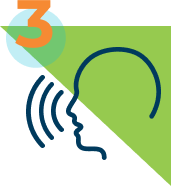
Stage 3: Post-Acute Recovery.
Post-acute recovery is the final stage of brain injury recovery. At this point, patients are capable of engaging in neuropsychological testing, which can provide a clearer understanding of deficits.
What to expect in stage 3 of brain injury recovery.
Rehabilitation takes a tremendous amount of physical and emotional work. During this stage, patients adjust to the realities of life after a brain injury while working toward the goal of maximum functionality and independence. They may experience mood swings, both as a result of neurological changes and the psychological challenges of rehab. Patients may also still struggle to fully comprehend their own cognitive and physical limitations.
Other common symptoms and behaviors during stage 3 of recovery include:
- Slower processing, learning, and response times
- Remembering things that are important to them, but forgetting other details
- Crying or becoming aggressive when overwhelmed by difficult or stressful situations
- Depression
- Subtle deficits that may be difficult for family or staff members to detect
- Poor judgement and reasoning
- Resistance to therapy
- Continued confabulation in an attempt to understand past events and make sense of their environment
of those with severe TBI recovered the ability to function independently at home for at least
8 hours/day 4
Tips for caregivers during stage 3 of brain injury recovery.
When supporting a loved one undergoing rehabilitation, patience is key, as complete recovery can take months or even years. Keep these tips in mind during stage 3.
Use positive language.
Emotional ups and downs are to be expected throughout the rehabilitation process. Help your loved one maintain a positive attitude through verbal affirmations. When they make a mistake due to slow processing or memory deficits, resist the urge to criticize, even unintentionally. Slang, figurative language, and playful teasing can be confusing for brain injury patients, so continue to choose your words carefully to minimize misunderstandings.
Continue to encourage independence
Allow your loved one to make more choices and initiate activities as their physical and cognitive functions improve. Urge them to advocate for themselves and respect their preferences when they do. If authorized by your loved one’s occupational and physical therapists, promote independent self-care and activities of daily living.
Be a rehabilitation cheerleader.
If your loved one is feeling unmotivated to engage in their rehabilitation therapy, remind them why it’s important. Physical, speech, and occupational therapy can improve their thinking, memory, and physical competence, allowing them to engage in the activities that bring them joy. Be sure to communicate openly and regularly with the clinical team as your loved one’s emotional and physical state evolves.
Encourage behavioral or mental health counseling.
If your loved one is experiencing significant emotional or behavioral dysregulation that affects their ability to function in their daily lives, encourage them to seek professional care.
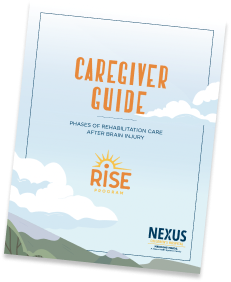
Helping children and adults rise after brain injury.
After a severe traumatic brain or spinal cord injury, stroke, or other neurological disorder, patients often require a broad range of services as their level of responsiveness and medical conditions evolve. The Rise Program emphasizes standards of care developed to help patients across all phases of injury recovery, from the earliest phases of post-acute care to ongoing rehabilitation. Treatment is not prescriptive, but rather creative, individualized, and ultimately, more effective at helping individuals rise to their maximum potential. Individuals participate in a variety of therapies central to improving sensory, motor, behavioral, and cognitive functions to help individuals regain as much function as possible while navigating any long-term deficits.
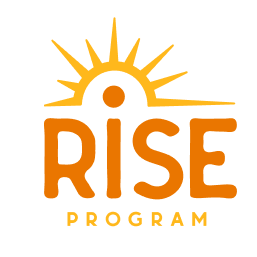
Rise Program Features
- Manage behavioral agitation, including medication management and environmental behaviors
- Initiate neurostimulation
- Early mobilization
- Optimize sleep/wake cycle
- Conduct neuropsychological evaluations for community re-entry recommendations
- DME recommendations and wheelchair clinics
- Caregiver training including modules and independent living trials
- Three-hour daily rehab not required for admission
- Treatment for all levels of brain injury recovery
- Patients involved in CPS investigation accepted

Meet our Champions.
“The staff at Nexus is just so amazing. They’re so well organized, they’re friendly, outgoing, they talk to you. It was a godsend that I was able to go there.
— David York, Rise Program patient
“The Nexus team worked magic and was able to revive me through physical, occupational, and speech therapy.”
— Nico Frescas, Rise Program patient
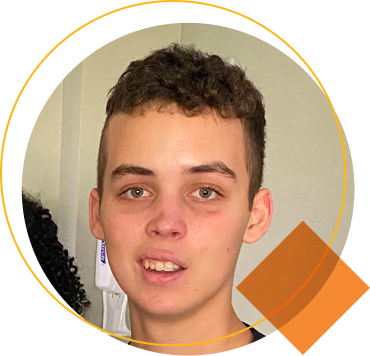
Sources:
- Recovery of Consciousness and Functional Outcome in Moderate to Severe Traumatic Brain Injury | JAMA Neurology
- Relationship between post-traumatic amnesia and white matter integrity in traumatic brain injury | Scientific Reports
- Confabulation | StatPearls
- Functional Outcomes Over the First Year After Moderate to Severe Traumatic Brain Injury | JAMA Neurology
